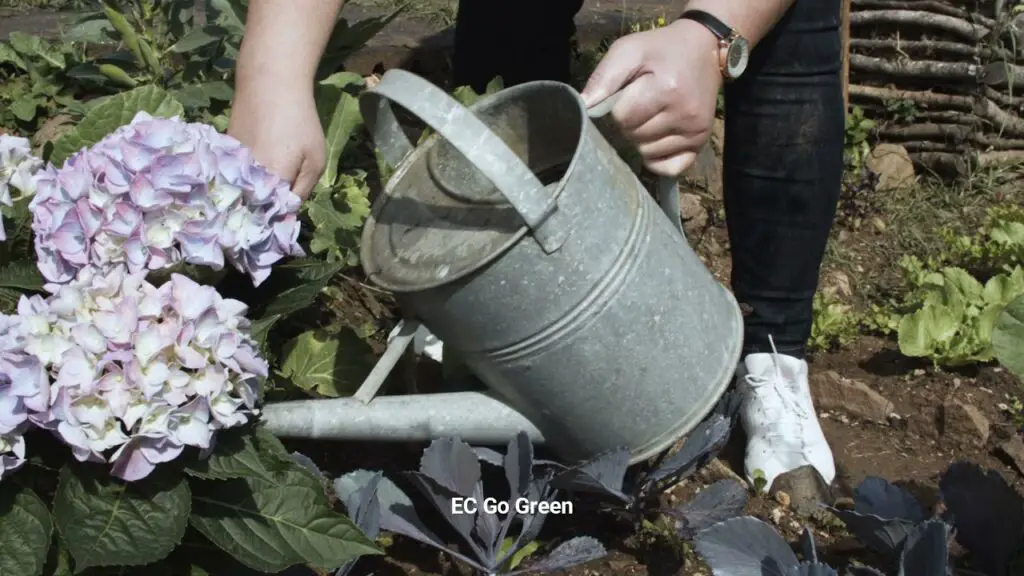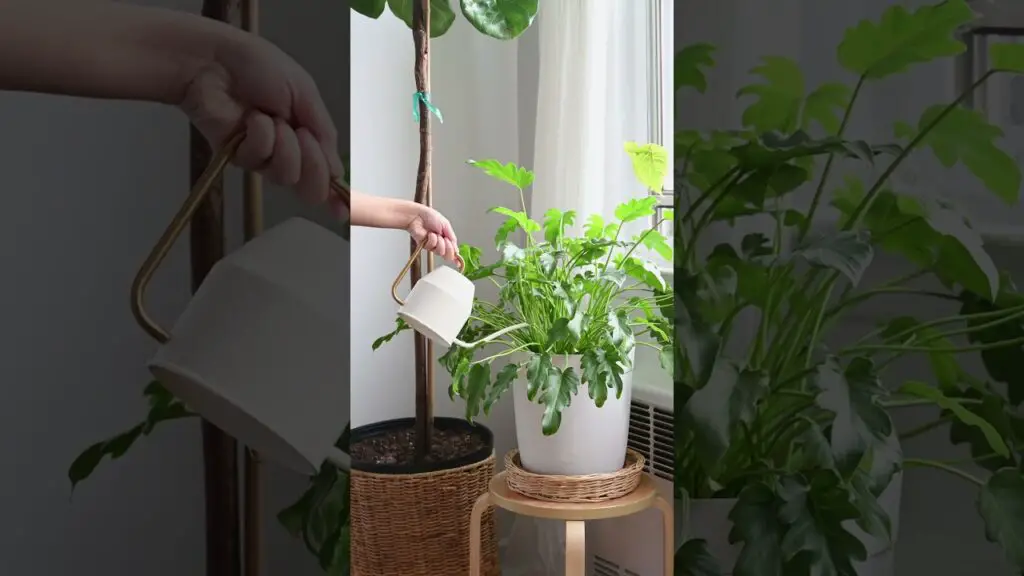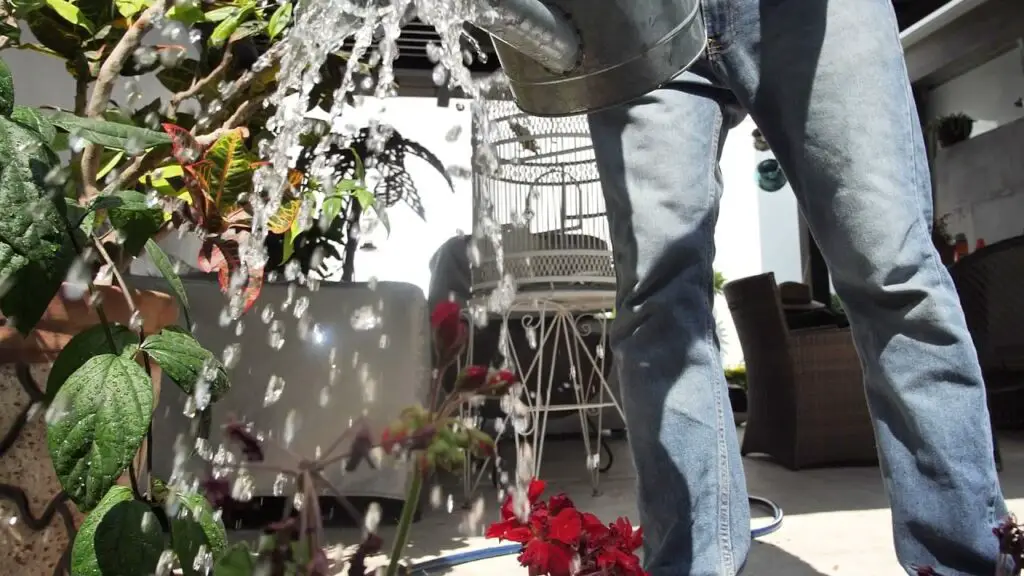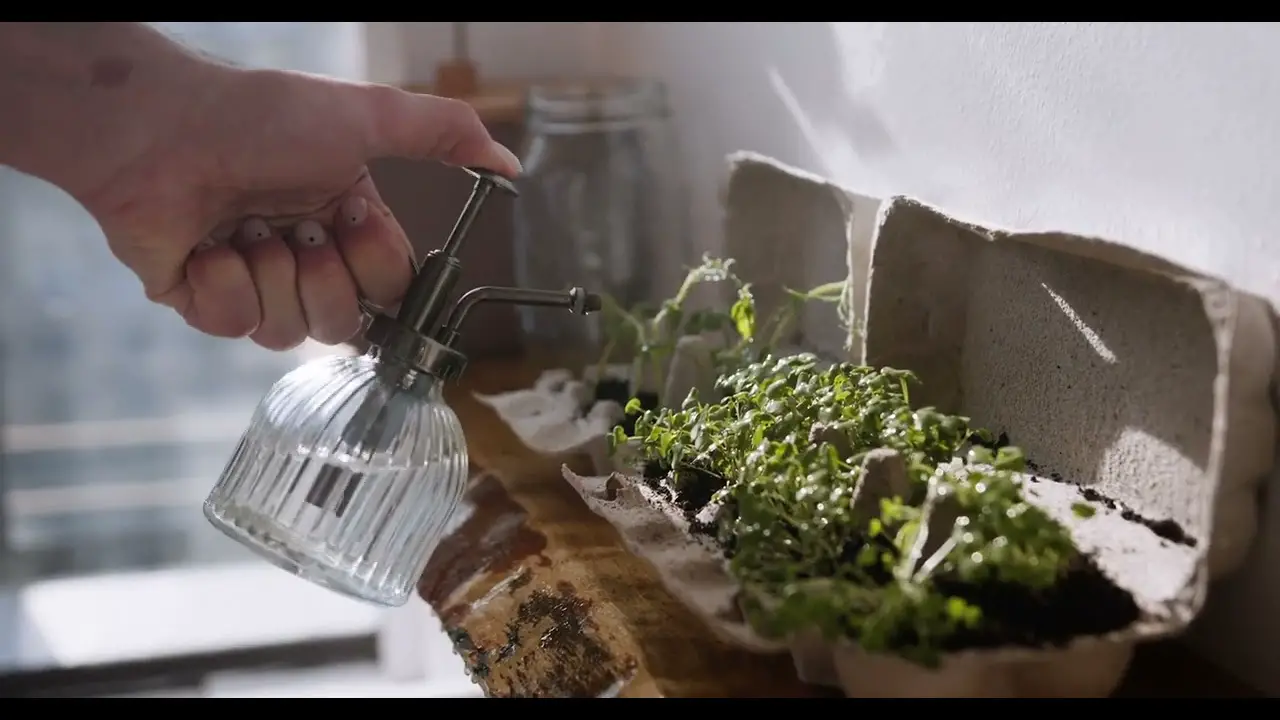Watering plants in the garden can seem like a daunting task, but with these tips, you’ll be able to water your plants like a pro! First, figure out when your plants need water. Most plants need watering every few days, but some may need more or less frequent watering depending on the climate and the type of plant.
Next, determine how much water each plant needs. This can vary depending on the size of the pot or container, as well as the type of soil. Once you’ve figured out when and how much to water your plants, it’s time to get started! Grab a garden hose or watering can and get ready to soak those plants!
When to water your plants
Watering your plants at the wrong time can do more harm than good. The best time to water most plants is in the morning, before the sun starts beating down on them. This gives the plants a chance to soak up the water and dry off before nightfall, when they could be susceptible to disease.
However, there are some plants that do better if they’re watered at night. These include succulents and cacti, which are native to dry climates and can suffer from too much heat during the day. Nighttime watering also helps reduce evaporation, so your plants will get more of the water they need.
In general, it’s best to water your plants when the soil is dry to the touch. This can vary depending on the type of plant and the climate you live in, but as a general rule, watering once a week should be sufficient. If you’re not sure, it’s always better to err on the side of too little water rather than too much. Overwatering can lead to root rot and other problems.

How to water your plants
There are a few different ways to water your plants, and the best method may vary depending on the type of plant. For example, succulents need less water than other types of plants, so it is best to water them using the drip method. This means slowly dripping water onto the soil, allowing it to soak in before adding more. On the other hand, plants that need more water, such as ferns, benefit from being watered with a sprinkler.
When watering your plants, it is important to make sure they are getting enough water. The best way to do this is to stick your finger in the soil to see if it is moist. If it is, then your plant is getting the water it needs. If the soil is dry, then you need to water your plant more.
There are a few things to keep in mind when watering your plants. First, make sure you are using the right type of water. Tap water is fine for most plants, but some plants, such as orchids, need distilled water.
Second, be careful not to over-water your plants. This can lead to root rot, which can kill your plant. Finally, if you are having trouble watering your plants, there are a number of automated watering systems available that can do the job for you.

What type of plants need watering
All plants need water to grow, but not all plants need the same amount of water. The best way to figure out how much water a plant need is to read the instructions that come with the plant. Some plants need water every day, some plants need water every other day, and some only need water once a week.
If you water a plant every day, you will need to water it less if the weather is cool or if the plant is in a pot with good drainage. If you water a plant once a week, you will need to water it more if the weather is hot or if the plant is in a pot with poor drainage.
Here are some general guidelines for how often to water different types of plants:
- Annual flowers and vegetables: Water every day or every other day.
- Perennial flowers and vegetables: Water every three days to once a week.
- -Trees and shrubs: Water every five days to once a week.
- Cacti and succulents: Water every two weeks to once a month.
If you are not sure how often to water your plant, it is better to err on the side of too little water rather than too much. Too much water can drown a plant, while too little water will cause the plant to wilt and die.
Different ways to water plants
There are a few different ways to water plants: by hand, with a hose, with a sprinkler, or with a drip system.
Watering plants by hand is the most common way to water plants. To water plants by hand, you need to get close to the plant and pour water directly on the soil. This is a good way to water small plants or plants that need a lot of water.
To water plants with a hose, you need to attach the hose to a spigot and turn on the water. Then, aim the hose at the plant and let the water flow. This is a good way to water larger plants or plants that are spread out.
To water plants with a sprinkler, you need to set up the sprinkler so that it is pointing at the plant. Then, turn on the water and let the sprinkler do its job. This is a good way to water large areas or plants that need a lot of water.
To water plants with a drip system, you need to set up the drip system so that it is pointing at the plant. Then, turn on the water and let the drip system do its job. This is a good way to water large areas or plants that need a lot of water.
Watering tips for people who work or travel a lot
When you’re away from home, it can be hard to remember to water your plants. But there are a few things you can do to make sure they stay healthy.
One thing is to use an automated watering system. These systems connect to your garden hose and water your plants for you on a set schedule.
If you don’t have an automated system, you can still water your plants while you’re away. Just ask a friend or neighbor to come over and do it for you. Be sure to give them clear instructions on how much water each plant needs.
Another option is to water your plants before you leave. This way, they’ll have enough moisture to last until you get back.

Signs that your plant needs more or less water
If you’re not sure whether your plant needs water, there are a few telltale signs you can look for. Wilting leaves, for example, usually means the plant is thirsty. Brown or crispy leaves may mean the plant is overwatered. And if the leaves are drooping, it might mean the plant needs more water.
If you think your plant needs more water, try watering it deeply and slowly. Water the soil around the plant, being careful not to get water on the leaves. This will help ensure that the roots get enough water. You can also try misting the plant with a spray bottle, which can be helpful for plants that like higher humidity.
If you think your plant needs less water, try watering it less often. Let the soil around the plant dry out between watering. And if the leaves are wilting, you can try moving the plant to a spot with more light or less heat.
Troubleshooting common watering problems
Watering plants can be a challenge, but with a little know-how, it can be easy to keep your plants healthy and looking great. Here are some tips for troubleshooting common watering problems:
plant is wilting, it may not be getting enough water. Check the soil to see if it is dry and then water accordingly. If the soil is too wet, it can cause root rot, so make sure to drain any excess water.
plant’s leaves are yellowing, it could be a sign of over-or under-watering. Again, check the soil to see if it needs more or less water. If the leaves are yellow and the soil is dry, it’s likely that the plant needs more water. If the leaves are yellow and the soil is wet, the plant may be getting too much water.
plant is not growing as fast as you would like, it could be a sign of insufficient watering. Make sure to water your plant regularly and give it enough water to encourage growth.
If you are having trouble getting your plant to absorb water, try using a watering can with a long spout. This will help direct the water to the roots of the plant where it can be absorbed more easily. You can also try breaking up the soil around the plant so that water can reach the roots more easily.
With a little troubleshooting, you can easily fix common watering problems and keep your plants healthy and happy.
Final thought
Watering plants can be a challenge, but with the right tips it can be easy to keep your plants healthy and looking great. In this article, we have talked about troubleshooting common watering problems and provided some helpful tips on how to water your plants correctly. By following these simple guidelines, you can make sure that your plants are getting the water they need to thrive.


